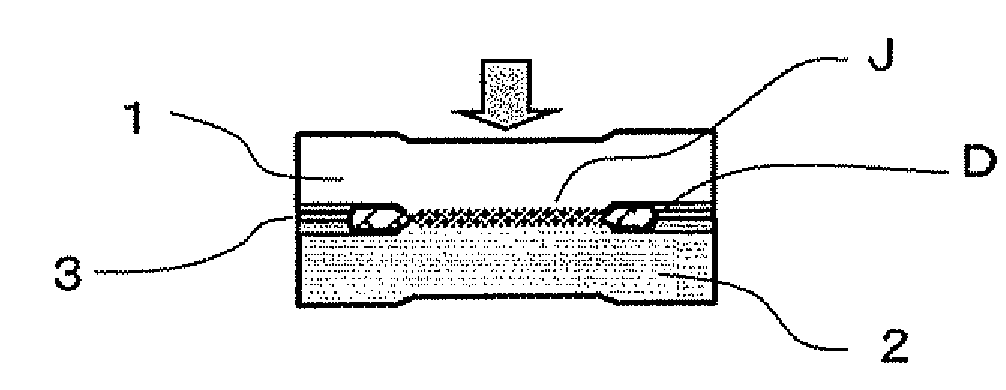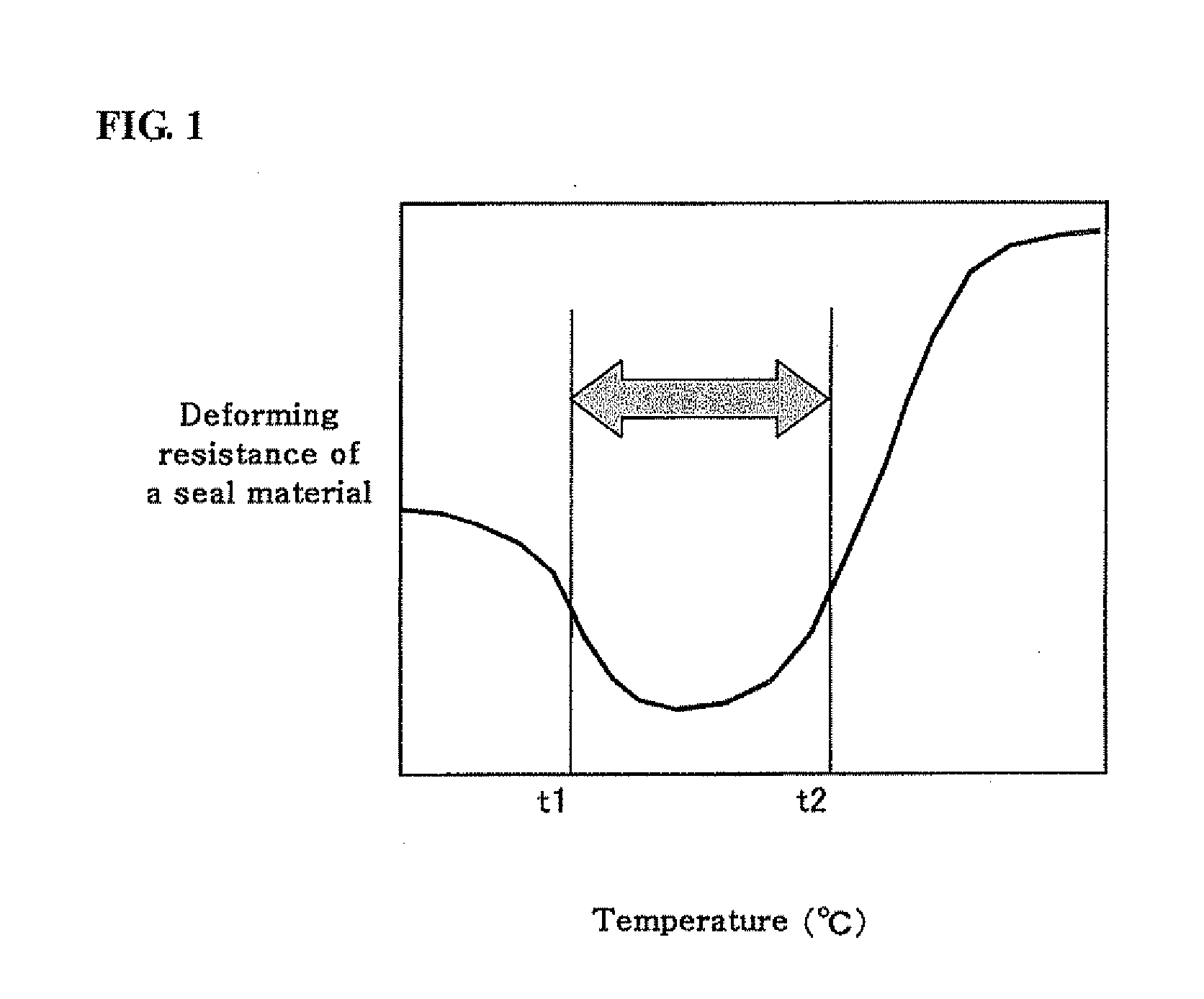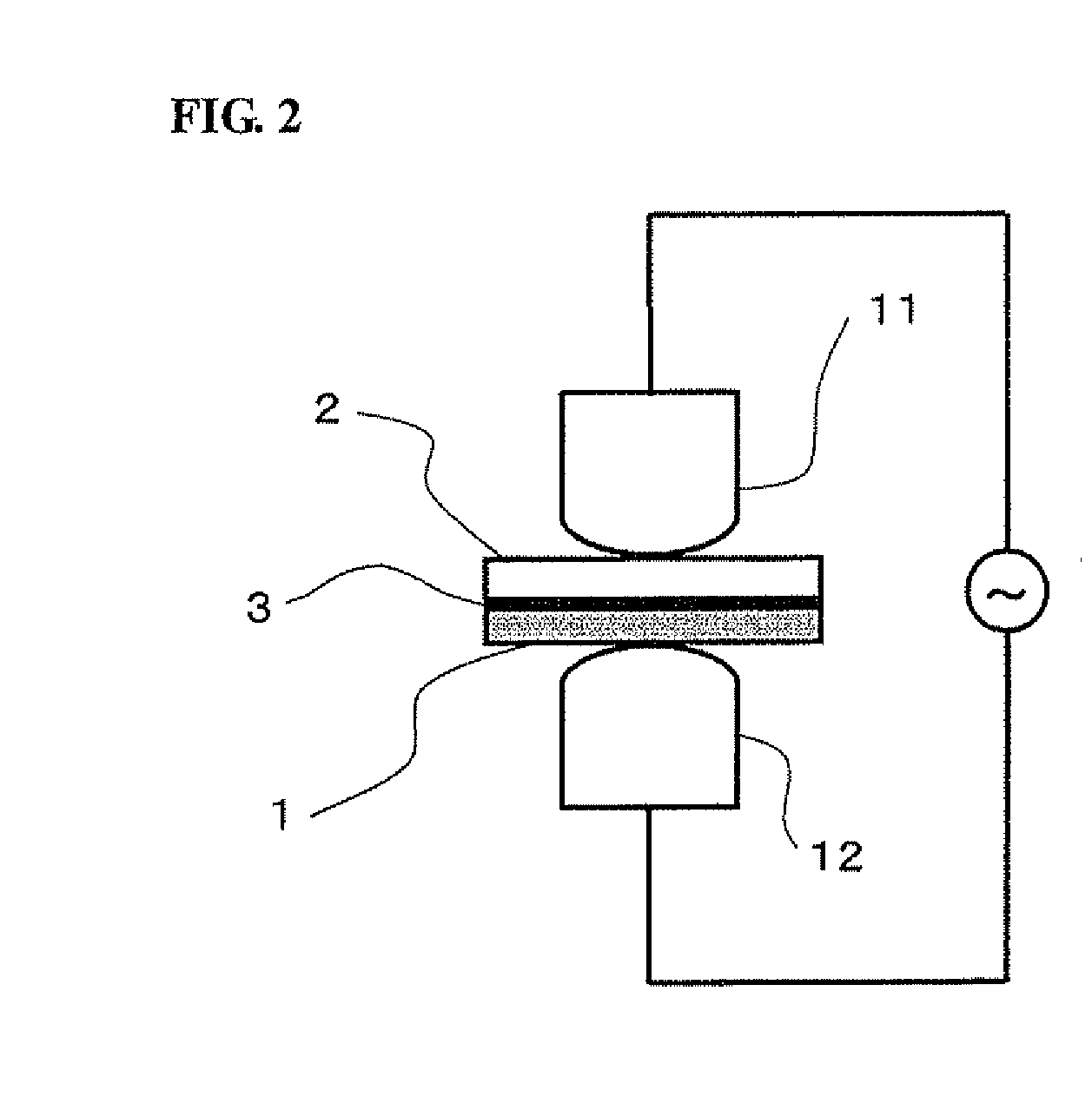Method and apparatus for bonding dissimilar materials made from metals
a technology of dissimilar materials and methods, applied in the direction of soldering apparatus, manufacturing tools,auxillary welding devices, etc., can solve the problems of corrosive current flow between the dissimilar metals, accelerate corrosion, and occur due to the contact of the dissimilar metals
- Summary
- Abstract
- Description
- Claims
- Application Information
AI Technical Summary
Benefits of technology
Problems solved by technology
Method used
Image
Examples
first embodiment
[0076]FIG. 2 illustrates a spot welding device employed in the first embodiment. The zinc-plated steel sheet 1 and the aluminum alloy 2 having the seal material 3 interposed therebetween are welded by pressing and conducting with a pair of welding electrodes 11 and 12 using an alternating current supply device.
[0077]FIG. 3 illustrates a bonding portion in detail. The zinc-plated layer 1p is formed on the surface. Further, the seal material 3 is interposed between a bonding interface of the zinc-plated steel sheet 1 and the aluminum alloy material 2.
[0078]The spot welding electrodes 11 and 12 include convex surfaces 11a and 12a at their ends so as to easily discharge the seal material 3, an oxide film and a eutectic fused body from the bonding interface, as explained below.
[0079]It is to be understood that both electrodes 11 and 12 do not necessarily have the shape of the end of the electrode. At least one of the electrodes 11 and 12 may have such a shaped end to perform smooth disch...
second embodiment
[0095]In the first embodiment, an example has been illustrated that facilitates a discharge of the seal material from the bonding portion or a reaction product generated during a bonding process using the welding electrodes having the convex surfaces at their ends. Alternatively, the same effects may be obtained when the bending portion having a predetermined curvature is formed on at least one bonding surface of the bonded material. In other words, in the present embodiment, as shown in FIG. 6A, the aluminum alloy material 2 having a bending portion 2a, which is formed in advance by pressing, is overlapped with the zinc-plated steel sheet 1. Further, the seal material 3 is interposed between the aluminum alloy material 2 and the zinc-plated steel sheet 1.
[0096]Additionally, the zinc-plated steel sheet 1 and the aluminum alloy material 2 are interposed between the electrodes 11 and 12. Under such a condition, when the pressing is performed, the seal material 3 is easily discharged f...
third embodiment
[0099]FIG. 7 illustrates an example wherein the bending portion 2b for facilitating the discharging of the seal material is formed as a thick portion on the aluminum alloy material 2. In other words, when the aluminum alloy material 2 is a cast material or an extrusion material, the thick bending portion 2b can be easily formed during a manufacturing process. Further, the seal material 3 as well as the reaction product can be easily discharged from the bonding interface. Therefore, the same effects as the above-mentioned embodiments can be obtained.
PUM
| Property | Measurement | Unit |
|---|---|---|
| temperature | aaaaa | aaaaa |
| thickness | aaaaa | aaaaa |
| pressing force | aaaaa | aaaaa |
Abstract
Description
Claims
Application Information
 Login to View More
Login to View More - R&D
- Intellectual Property
- Life Sciences
- Materials
- Tech Scout
- Unparalleled Data Quality
- Higher Quality Content
- 60% Fewer Hallucinations
Browse by: Latest US Patents, China's latest patents, Technical Efficacy Thesaurus, Application Domain, Technology Topic, Popular Technical Reports.
© 2025 PatSnap. All rights reserved.Legal|Privacy policy|Modern Slavery Act Transparency Statement|Sitemap|About US| Contact US: help@patsnap.com



